Considering Historical Land Use When Estimating Soil Carbon Stock Changes of Transitional Croplands
Abstract
1. Introduction
2. Materials and Methods
2.1. Land Use Identification
2.2. Drivers of Land Use Change
2.3. Carbon Change Assessment
3. Results
3.1. Land Use Identification
3.2. Farmer Surveys: Drivers of Land Use Change
3.3. Carbon Change Implications
4. Discussion
4.1. Land Use Identification
4.2. Drivers of Land Use Change
4.3. Carbon Change Assessment
5. Conclusions
Author Contributions
Funding
Data Availability Statement
Acknowledgments
Conflicts of Interest
Appendix A

References
- Tyner, W.; Taheripour, F. Biofuels, policy options, and their implications: Analyses using partial and general equilibrium approaches. J. Agric. Food Ind. Organ. 2008, 6, 2. [Google Scholar] [CrossRef]
- Taheripour, F.; Mueller, S.; Kwon, H.; Khanna, M.; Emery, I.; Copenhaver, K.; Wang, M. Comments on “Environmental Outcomes of the US Renewable Fuel Standard”. 2021. Available online: https://greet.es.anl.gov/files/comment_environ_outcomes_us_rfs (accessed on 14 December 2023).
- Emery, I.; Mueller, S.; Qin, Z.; Dunn, J. Evaluating the Potential of Marginal Land for Cellulosic Feedstock Production and Carbon Sequestration in the United States. Environ. Sci. Technol. 2017, 51, 733–741. [Google Scholar] [CrossRef] [PubMed]
- Plevin, R.; Gibbs, H.; Duffy, J.; Yui, S.; Yeh, S. Agro-Ecological Zone Emission Factor (AEZ-EF) Model 2014. No. 1236-2019-175. Volume 47. Available online: https://ageconsearch.umn.edu/record/283433/ (accessed on 14 December 2023).
- Kwon, H.; Liu, X. FD-CIC and CCLUB for Biofuel Feedstocks. GREET Training Workshop 2022. Available online: https://greet.anl.gov/publication-workshop_2022_fdcic_cclubde (accessed on 14 December 2023).
- 6. IIASA-FOLU Integrated Scenarios. Global Biosphere Management Model Project. Available online: https://iiasa.ac.at/models-tools-data/globiom (accessed on 15 December 2023).
- IPCC. Climate Change and Land, an IPCC Special Report on Climate Change, Desertification, Land Degradation, Sustainable Land Management, Food Security, and Greenhouse Gas Fluxes in Terrestrial Ecosystems; Chapter 2 of IPCC 2019 Climate Change and Land; IPCC: Geneva, Switzerland, 2019. [Google Scholar]
- Lark, T.J.; Salmon, J.M.; Gibbs, H.K. Cropland expansion outpaces agricultural and biofuel policies in the United States. Environ. Res. Lett. 2015, 10, 044003. [Google Scholar] [CrossRef]
- Lark, T.; Mueller, R.; Johnson, J.; Gibbs, H. Measuring land-use and land-cover change using the U.S. department of agriculture’s cropland data layer: Cautions and recommendations. Int. J. Appl. Earth Obs. Geoinf. 2019, 62, 224–235. [Google Scholar] [CrossRef]
- Copenhaver, K.; Hamada, Y.; Mueller, S.; Dunn, J.B. Examining the Characteristics of the Cropland Data Layer in the Context of Estimating Land Cover Change. ISPRS Int. J. Geo-Inf. 2021, 10, 281. [Google Scholar] [CrossRef]
- Wright, K.; Wimberly, M. Recent land use change in the Western Corn Belt threatens grasslands and wetlands. Proc. Natl. Acad. Sci. USA 2013, 110, 4134–4139. [Google Scholar] [CrossRef] [PubMed]
- World Wildlife Foundation Annual Plowprint Report. Available online: https://www.worldwildlife.org/projects/plowprint-report (accessed on 15 December 2023).
- USDA National Agricultural Statistics Service Quick Stats. Survey Data. 2023. Available online: https://quickstats.nass.usda.gov/ (accessed on 15 December 2023).
- Tan, M.; Li, Y. Spatial and Temporal Variation of Cropland at the Global Level from 1992 to 2015. J. Resour. Ecol. 2019, 10, 235–245. [Google Scholar]
- Auch, R.F.; Wellington, D.F.; Taylor, J.L.; Stehman, S.V.; Tollerud, H.J.; Brown, J.F.; Loveland, T.R.; Pengra, B.W.; Horton, J.A.; Zhu, Z.; et al. Conterminous United States Land-Cover Change (1985–2016): New Insights from Annual Time Series. Land 2022, 11, 298. [Google Scholar] [CrossRef]
- Johnson, D.; Mueller, R.; Willis, P. The utility of the Cropland Data Layer for monitoring US grassland extent. In Proceedings of the 3rd Biennial Conference on the Conservation of America’s Grasslands, Fort Collins, CO, USA, 29 September–1 October 2015; National Wildlife Federation: Washington, DC, USA, 2015; pp. 15–19. [Google Scholar]
- Reitsma, K.; Clay, D.; Clay, S.; Dunn, J.; Reese, C. Does the U.S. Cropland Data Layer Provide an Accurate Benchmark for Land-Use Change Estimates? Agron. J. 2015, 108, 226. [Google Scholar] [CrossRef]
- LandTrendr Home Page, Kennedy Geospatial Lab, University of Oregon. Available online: https://geotrendr.ceoas.oregonstate.edu/landtrendr/ (accessed on 16 December 2023).
- Lark, T.; Schelly, I.; Gibbs, H. Accuracy, Bias, and Improvements in Mapping Crops and Cropland across the United States Using the USDA Cropland Data Layer. Remote Sens. 2021, 13, 968. [Google Scholar] [CrossRef]
- USGS National High Altitude Photography Program. 2023. Available online: https://www.usgs.gov/centers/eros/science/usgs-eros-archive-aerial-photography-national-high-altitude-photography-nhap (accessed on 16 December 2023).
- USDA National Aerial Imagery Program. 2023. Farm Services Agency. Available online: https://www.fsa.usda.gov/programs-and-services/aerial-photography/imagery-programs/naip-imagery/ (accessed on 16 December 2023).
- Hemati, M.; Hasanlou, M.; Mahdianpari, M.; Mohammadimanesh, F. A Systematic Review of Landsat Data for Change Detection Applications: 50 Years of Monitoring the Earth. Remote Sens. 2021, 13, 2869. [Google Scholar] [CrossRef]
- Martinez-Feria, R.; Basso, B. Predicting soil carbon changes in switchgrass grown on marginal lands under climate change and adaptation strategies. GCB Bioenergy 2020, 12, 742–755. [Google Scholar] [CrossRef]
- Basso, B.; Ritchie, J.T.; Grace, P.R.; Sartori, L. Simulation of Tillage Systems Impact on Soil Biophysical Properties Using the SALUS Model; Ital. J. Agron. Riv. Agron. 2006, 4, 677–688. [Google Scholar]
- Basso, B.; Ritchie, J. Simulating crop growth and biogeochemical fluxes in response to land management using the SALUS model. In The Ecology of Agricultural Landscapes: Long-Term Research on the Path to Sustainability; Hamilton, S.K., Doll, J.E., Robertson, G.P., Eds.; Oxford University Press: New York, NY, USA, 2015; pp. 252–274. [Google Scholar]
- Claassen, R.; Bowman, M.; McFadden, J.; Smith, D.; Wallander, S. Tillage Intensity and Conservation Cropping in the United States; EIB-197; U.S. Department of Agriculture, Economic Research Service: Washington, DC, USA, 2018. [Google Scholar]
- Qin, Z.; Dunn, J.; Kwon, H.; Mueller, S.; Wander, M. Soil carbon sequestration and land use change associated with biofuel production: Empirical evidence. GCB Bioenergy 2016, 8, 66–80. [Google Scholar] [CrossRef]
- Xu, H.; Sieverding, H.; Kwon, H.; Clay, D.; Stewart, C.; Johnson, J.; Qin, Z.; Karlen, D.; Wang, M. A global meta-analysis of soil organic carbon response to corn stover removal. GCB-Bioenergy 2019, 11, 1215–1233. [Google Scholar] [CrossRef]
- Mandal, A.; Majumder, A.; Dhaliwal, S.; Toor, A.; Kumar Mani, P.; Naresh, R.; Gupta, R.; Mitran, T. Impact of agricultural management practices on soil carbon sequestration and its monitoring through simulation models and remote sensing techniques: A review. Crit. Rev. Environ. Sci. Technol. 2022, 52, 1–49. [Google Scholar] [CrossRef]
- Basso, B. Crop Modeling Can Scale Regenerative Agriculture to Address Climate Change. 9 March 2022. Available online: https://www.greenbiz.com/article/crop-modeling-can-scale-regenerative-agriculture-address-climate-change#:~:text=SALUS%20is%20a%20validated%20process,computer%2C%20like%20a%20digital%20twin (accessed on 17 December 2023).
- Classen, R.; Carriazo, F.; Cooper, J.; Hellerstein, D.; Udea, K. Grassland to Cropland Conversion in the Northern Plains: The Role of Crop Insurance, Commodity, and Disaster Programs; ERR-120; U.S. Department of Agriculture, Economic Research Service: Washington, DC, USA, 2011. [Google Scholar]
- Hellerstein, D. The US Conservation Reserve Program: The evolution of an enrollment mechanism. Land Use Policy 2017, 63, 601–610. [Google Scholar] [CrossRef]

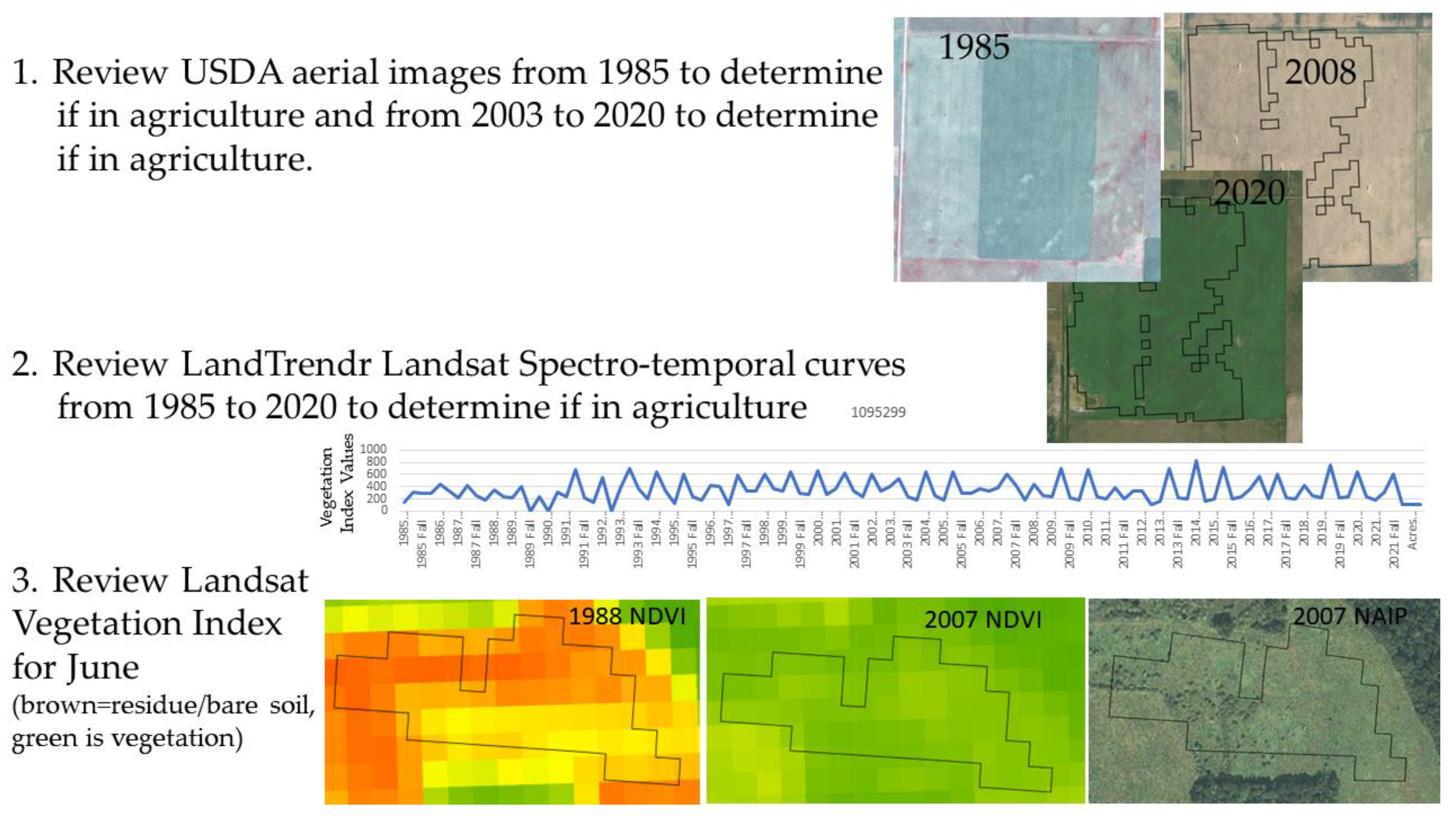


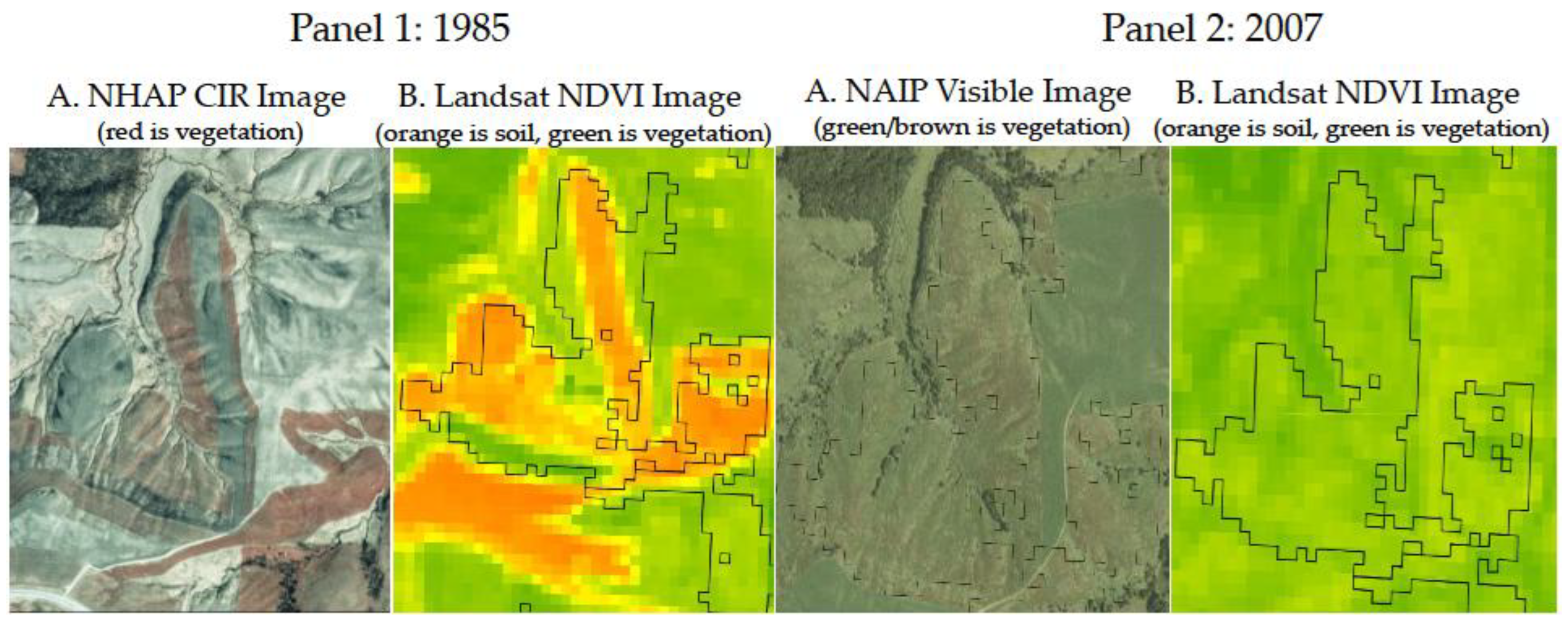
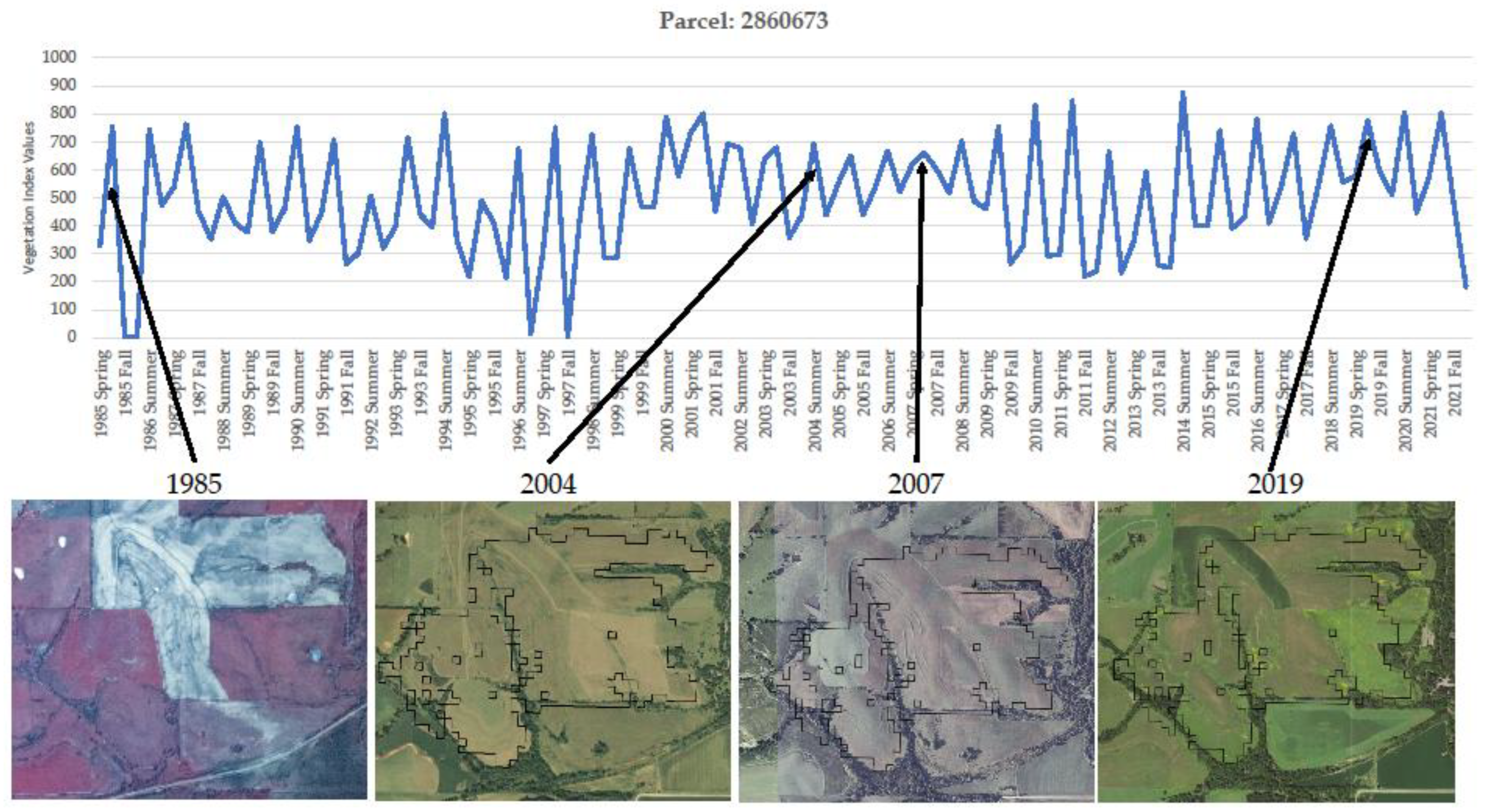
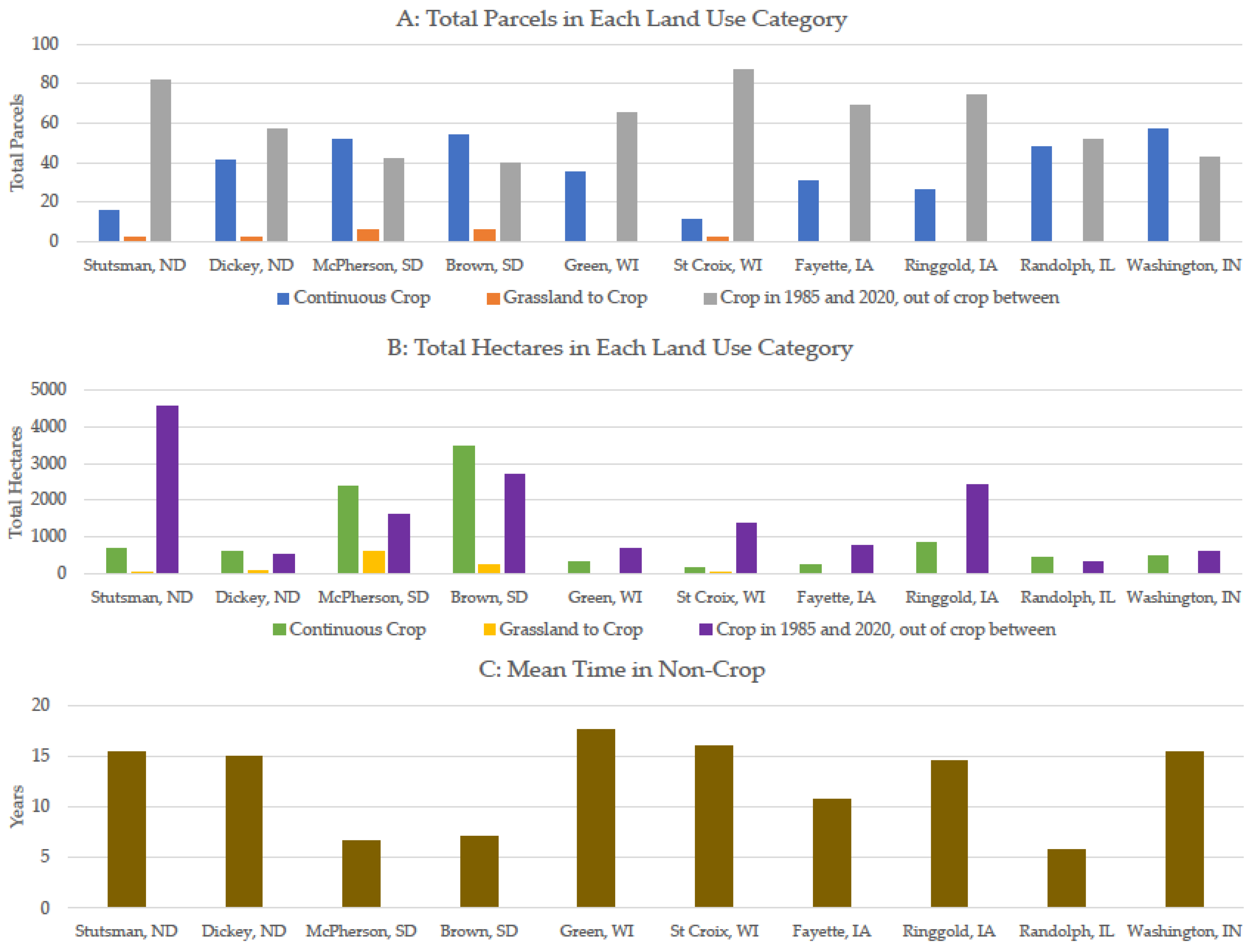
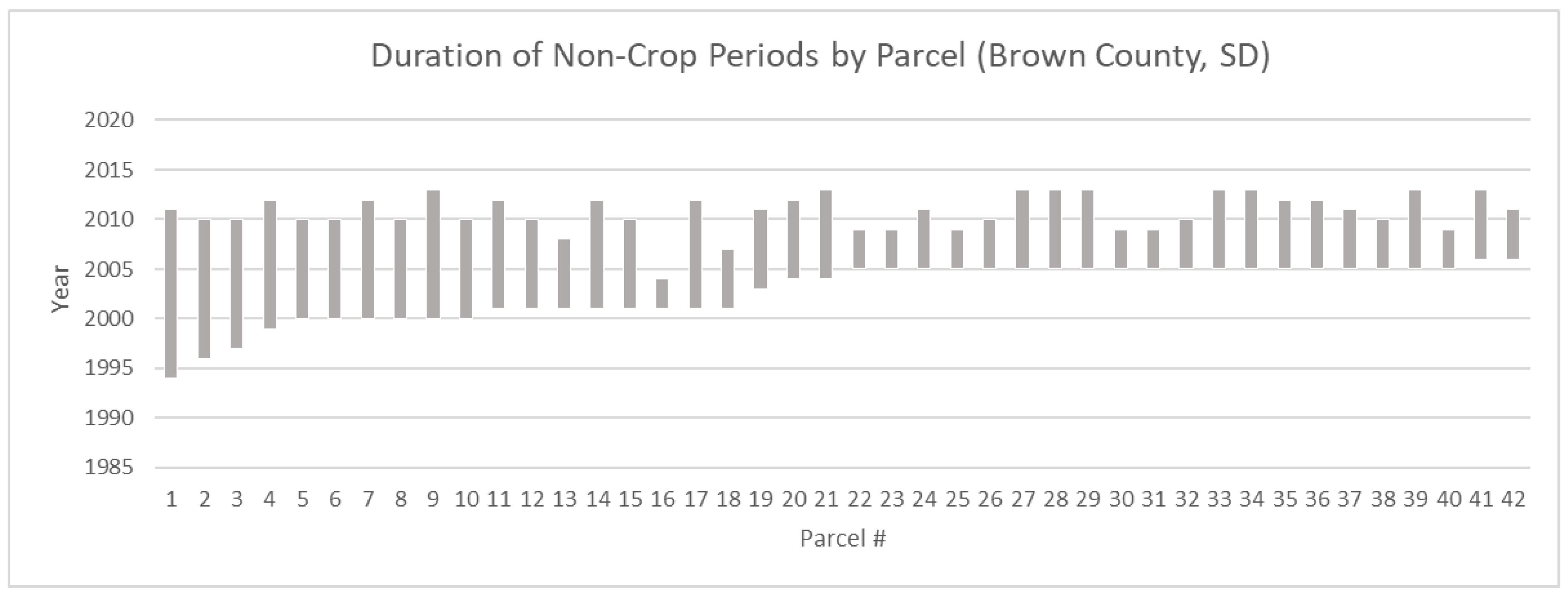
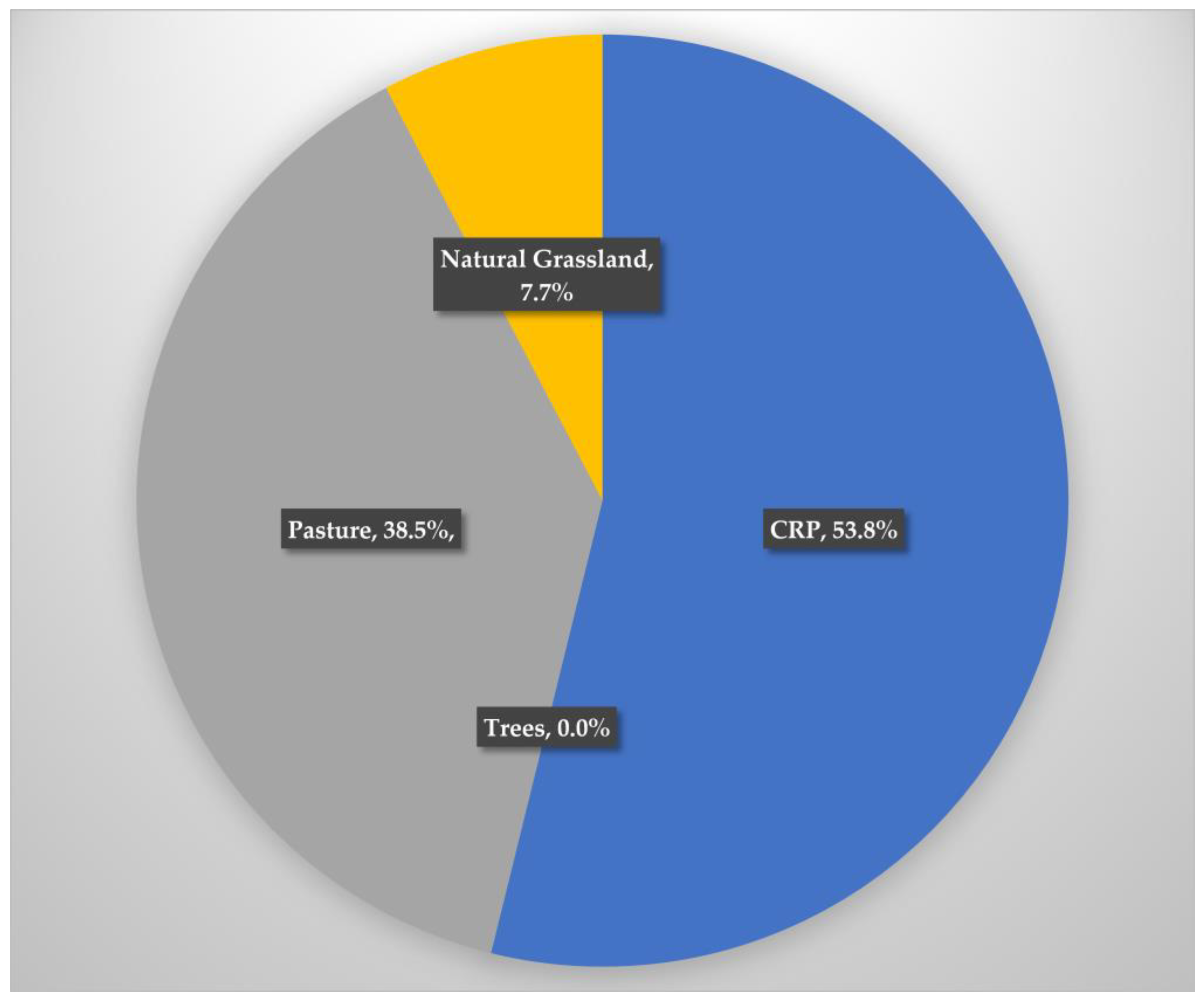
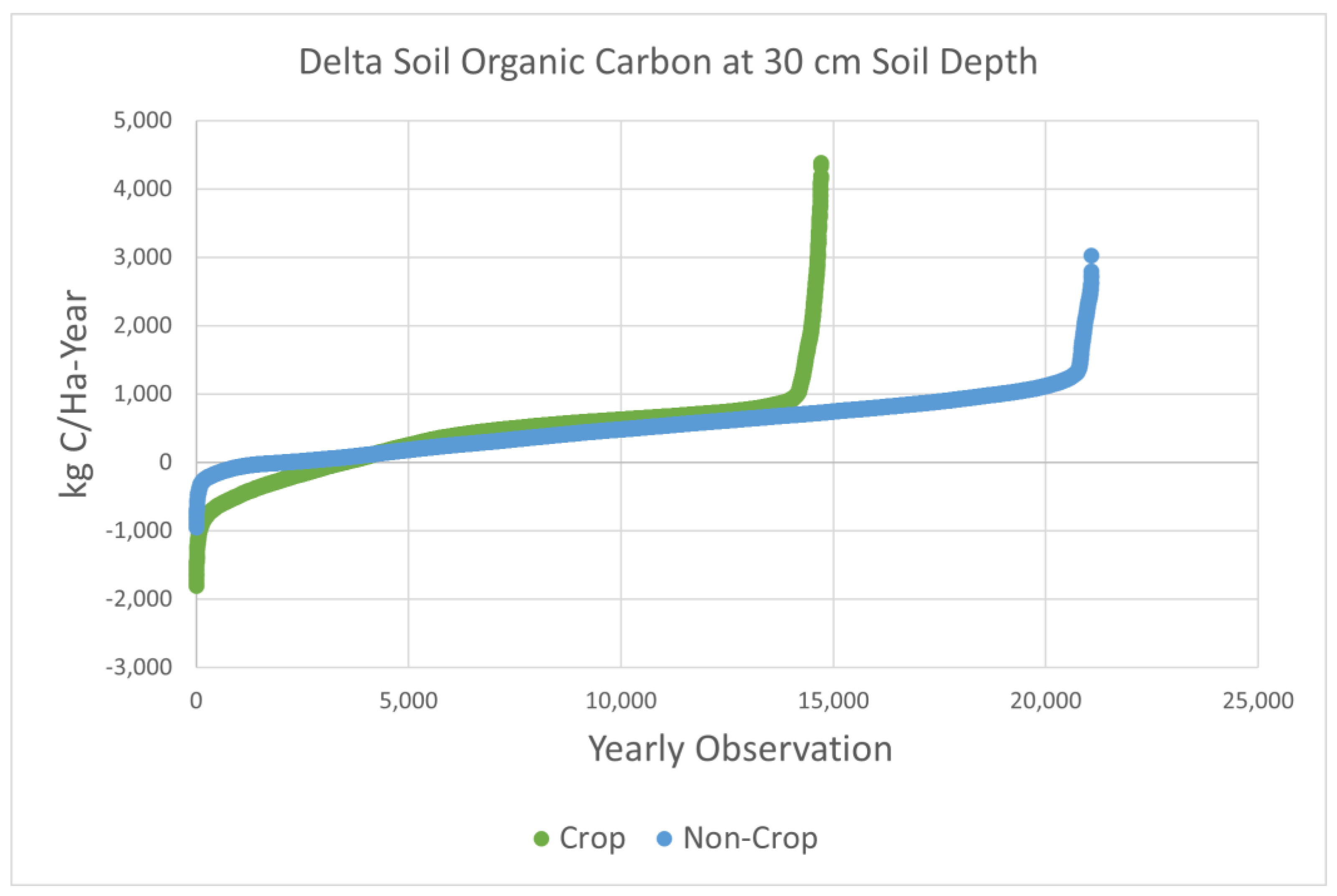
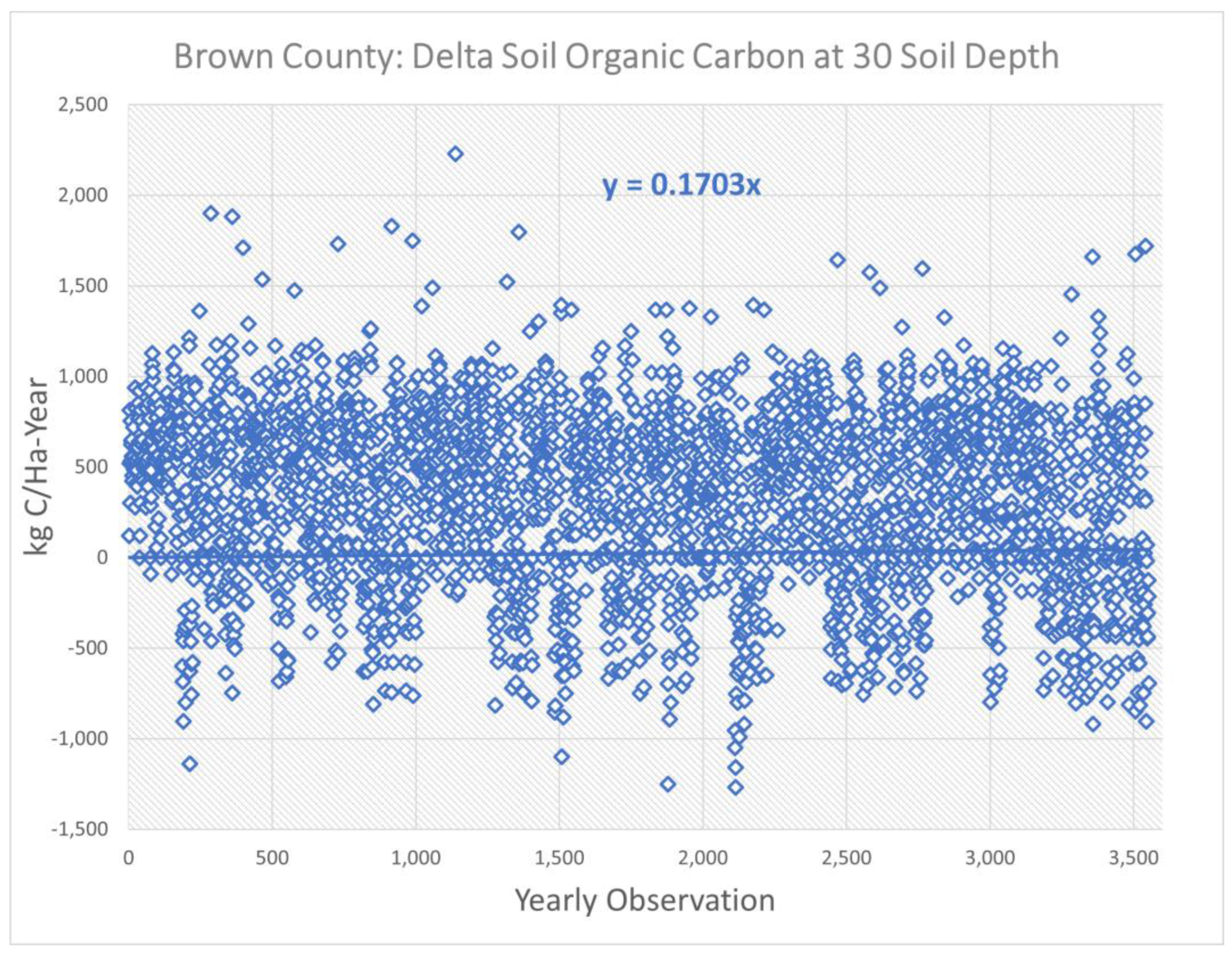
| State | County | SALUS Average | Delta kgC/ha-Year−1 | SALUS Linear Trendline over Time x | CCLUB | |
|---|---|---|---|---|---|---|
| SALUS Min | SALUS Max | |||||
| North Dakota | Stutsman | 309 | −1204 | 2899 | 0.1498x | 298 |
| North Dakota | Dickey | 374 | −1069 | 3628 | 0.1815x | 371 |
| South Dakota | McPherson | 350 | −1717 | 3707 | 0.1699x | 511 |
| South Dakota | Brown | 350 | −1267 | 2229 | 0.1703x | 227 |
| Wisconsin | Green | 515 | −2139 | 4324 | 0.2508x | 364 |
| Wisconsin | StCroix | 408 | −1633 | 4191 | 0.1985x | 259 |
| Iowa | Fayette | 572 | −1504 | 4146 | 0.2782x | 321 |
| Iowa | Ringgold | 513 | −1141 | 4386 | 0.2492x | 289 |
| Illinois | Randolph | 610 | −1357 | 3042 | 0.2966x | 167 |
| Indiana | Washington | 571 | −659 | 2780 | 0.2777x | 197 |
| Crop | Non-Crop | |
|---|---|---|
| Parcels | 371 | 629 * |
| Number of Annual Model Observations | 14,711 | 21,073 |
| Max (kgC/ha-year−1) | 4386 | 3026 |
| Min (kgC/ha-year−1) | −1809 | −956 |
| Average (kgC/ha-year−1) | 377 | 515 |
Disclaimer/Publisher’s Note: The statements, opinions and data contained in all publications are solely those of the individual author(s) and contributor(s) and not of MDPI and/or the editor(s). MDPI and/or the editor(s) disclaim responsibility for any injury to people or property resulting from any ideas, methods, instructions or products referred to in the content. |
© 2024 by the authors. Licensee MDPI, Basel, Switzerland. This article is an open access article distributed under the terms and conditions of the Creative Commons Attribution (CC BY) license (https://creativecommons.org/licenses/by/4.0/).
Share and Cite
Copenhaver, K.; Mueller, S. Considering Historical Land Use When Estimating Soil Carbon Stock Changes of Transitional Croplands. Sustainability 2024, 16, 734. https://doi.org/10.3390/su16020734
Copenhaver K, Mueller S. Considering Historical Land Use When Estimating Soil Carbon Stock Changes of Transitional Croplands. Sustainability. 2024; 16(2):734. https://doi.org/10.3390/su16020734
Chicago/Turabian StyleCopenhaver, Kenneth, and Steffen Mueller. 2024. "Considering Historical Land Use When Estimating Soil Carbon Stock Changes of Transitional Croplands" Sustainability 16, no. 2: 734. https://doi.org/10.3390/su16020734
APA StyleCopenhaver, K., & Mueller, S. (2024). Considering Historical Land Use When Estimating Soil Carbon Stock Changes of Transitional Croplands. Sustainability, 16(2), 734. https://doi.org/10.3390/su16020734







